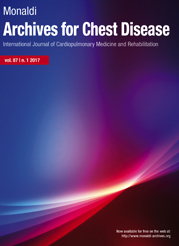Incipient and subclinical tuberculosis: a narrative review
All claims expressed in this article are solely those of the authors and do not necessarily represent those of their affiliated organizations, or those of the publisher, the editors and the reviewers. Any product that may be evaluated in this article or claim that may be made by its manufacturer is not guaranteed or endorsed by the publisher.
Authors
Mycobacterium tuberculosis has been known to infect humans for eons. It is an airborne infectious disease transmitted through droplet nuclei of 1 to 5 µm in diameter. Historically, tuberculosis (TB) was considered a distinct condition characterized by TB infection and active TB disease. However, recently, the concept of a dynamic spectrum of infection has emerged, wherein the pathogen is initially eradicated by the innate or adaptive immune system, either in conjunction with or independently of T cell priming. Other categories within this spectrum include TB infection, incipient TB, subclinical TB, and active TB disease. Various host- and pathogen-related factors influence these categories. Furthermore, subclinical TB can facilitate the spread of infection within the community. Due to its asymptomatic nature, there is a risk of delayed diagnosis, and some patients may remain undiagnosed. Individuals with subclinical TB may stay in this stage for an indeterminate period without progressing to active TB disease, and some may even experience regression. Early diagnosis and treatment of TB are essential to meet the 2035 targets outlined in the end-TB strategy. This strategy should also include incipient and subclinical TB. This review will focus on the definition, natural history, burden, trajectory, transmissibility, detection, and management of early-stage TB.
How to Cite

This work is licensed under a Creative Commons Attribution-NonCommercial 4.0 International License.






